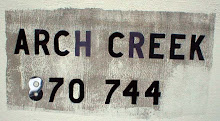
WaPo story via John at AmericaBlog.
The firefighting system in the massive $736 million embassy complex in Baghdad has potential safety problems that top U.S. officials dismissed in their rush to declare construction largely completed by the end of last year, according to internal State Department documents, e-mails and interviews.
Some officials assert that in the push to complete the long-delayed project, potentially life-threatening problems have been left untouched. "This is serious enough to get someone killed," said a State Department official, who spoke on the condition of anonymity because he feared retaliation. "The fire systems are the tip of the iceberg. That is the most visible. But no one has ever inspected the electrical system, the power plant" and other parts of the embassy complex, which will house more than 1,000 people and is vulnerable to mortar attacks.
Other sources involved in the project, also requesting anonymity, insist that disputes involve technical paperwork issues, largely because the contractor had never built an embassy and did not realize that under State Department rules it needed approval for substituting certain materials. Now, much of that work needs to be reexamined and checked, they said, substantially delaying the project's completion.
The finger-pointing over fire safety is a microcosm of the suspicion that hangs over the troubled project, which is built on acreage almost four times the size of the Pentagon. Originally expected to be completed by July 1, 2007, at a cost of $592 million, the largest U.S. diplomatic mission in the world has been plagued by poor planning, shoddy workmanship and design changes that have added to the cost. The Justice Department is conducting a criminal investigation of the contract and related subcontracts, sources said. . . .
Then, in September 2007, the pipes burst during a pressure test, and the inspectors discovered that many of the problems they had identified had been ignored. The inspectors documented hundreds of violations of the contract specifications and of fire codes and regulations, according to portions of the report made public by the House Oversight and Government Reform Committee in October. . . .
The Hughes representative signed a document stating that he witnessed a test of the fire-safety system on Dec. 7, but that did not mean he said it was working properly, said Philip J. DiNenno, president of Hughes. . . .

No comments:
Post a Comment